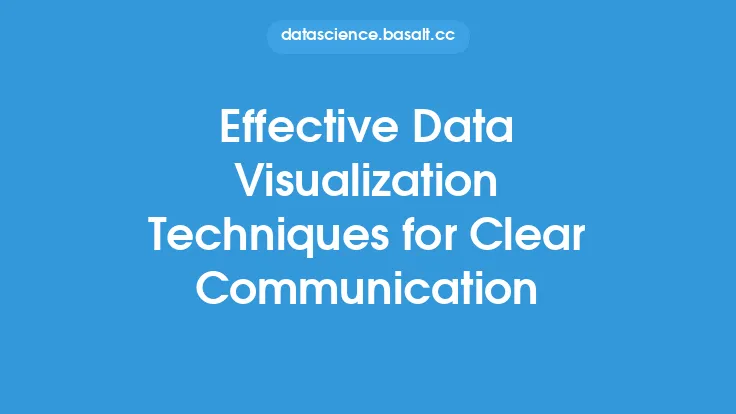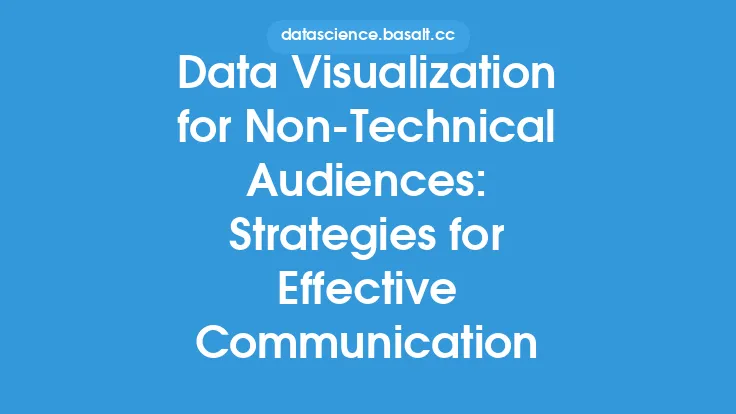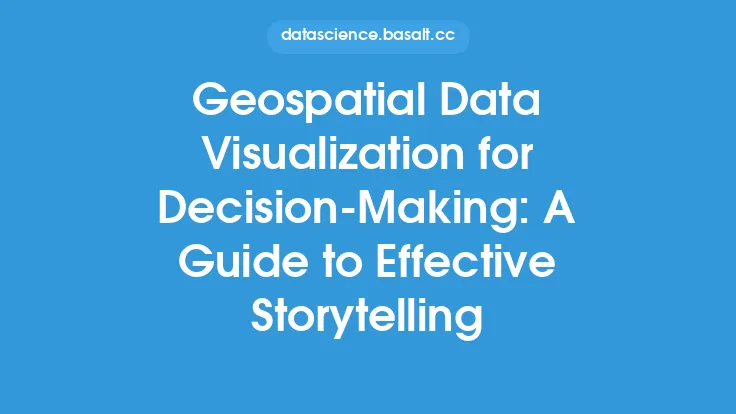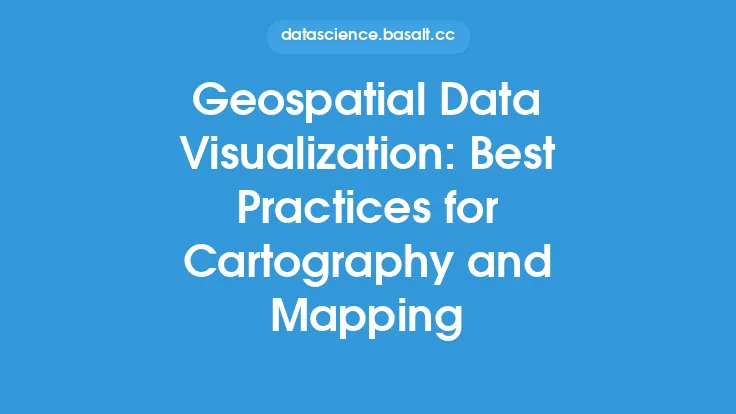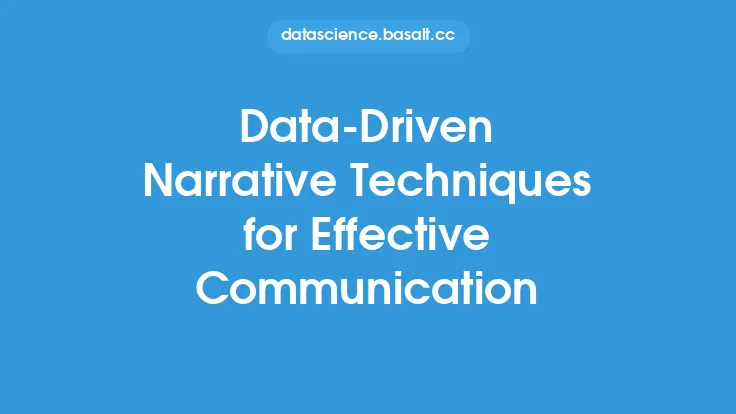Geospatial visualization is a powerful tool for communicating complex geographic data to both technical and non-technical audiences. It involves the use of maps, 3D scenes, and other visualizations to represent and analyze geospatial data, which can include information about the Earth's surface, climate, population, and other spatial phenomena. Effective geospatial visualization techniques can help to identify patterns, trends, and relationships in the data, and to communicate insights and findings to stakeholders.
Introduction to Geospatial Visualization Techniques
There are several techniques used in geospatial visualization, including mapping, 3D visualization, and animation. Mapping is the most common technique, which involves representing geospatial data on a two-dimensional map. This can include point, line, and polygon data, such as the location of cities, roads, and boundaries. 3D visualization involves representing geospatial data in a three-dimensional environment, which can be useful for analyzing complex spatial relationships and patterns. Animation involves creating dynamic visualizations that show changes in geospatial data over time, such as the movement of people or objects.
Data Preparation and Processing
Before geospatial data can be visualized, it must be prepared and processed. This involves several steps, including data cleaning, data transformation, and data integration. Data cleaning involves removing errors and inconsistencies from the data, such as duplicate or missing values. Data transformation involves converting the data into a format that can be used for visualization, such as projecting coordinates from a geographic coordinate system to a projected coordinate system. Data integration involves combining multiple datasets into a single dataset, which can be useful for analyzing relationships between different variables.
Geospatial Visualization Tools and Technologies
There are several tools and technologies used in geospatial visualization, including geographic information systems (GIS), computer-aided design (CAD) software, and programming languages such as Python and R. GIS software, such as ArcGIS and QGIS, provide a range of tools and functions for visualizing and analyzing geospatial data, including mapping, 3D visualization, and spatial analysis. CAD software, such as Autodesk and SketchUp, provide tools and functions for creating 3D models and visualizations. Programming languages, such as Python and R, provide a range of libraries and packages for geospatial visualization, including Folium, Plotly, and Leaflet.
Visualization Types and Methods
There are several types and methods of geospatial visualization, including choropleth maps, heat maps, and network diagrams. Choropleth maps involve representing geospatial data as colored polygons, such as the population density of different regions. Heat maps involve representing geospatial data as a continuous surface, such as the temperature or precipitation patterns. Network diagrams involve representing geospatial data as a network of nodes and edges, such as the movement of people or objects between different locations.
Best Practices for Effective Geospatial Visualization
There are several best practices for effective geospatial visualization, including keeping it simple, using color effectively, and providing context. Keeping it simple involves avoiding clutter and complexity in the visualization, and focusing on the key insights and findings. Using color effectively involves selecting colors that are visually appealing and easy to interpret, and using color consistently throughout the visualization. Providing context involves including additional information and metadata, such as legends, scales, and sources, to help the audience understand the visualization and its insights.
Applications and Use Cases
Geospatial visualization has a range of applications and use cases, including urban planning, emergency response, and environmental monitoring. Urban planning involves using geospatial visualization to analyze and communicate information about urban development, such as population growth, transportation patterns, and land use. Emergency response involves using geospatial visualization to respond to natural disasters and other emergencies, such as hurricanes, wildfires, and earthquakes. Environmental monitoring involves using geospatial visualization to analyze and communicate information about environmental phenomena, such as climate change, air and water quality, and wildlife habitats.
Future Directions and Trends
The field of geospatial visualization is constantly evolving, with new technologies and techniques emerging all the time. Some of the future directions and trends in geospatial visualization include the use of artificial intelligence and machine learning, the integration of geospatial data with other types of data, and the development of more interactive and immersive visualizations. Artificial intelligence and machine learning involve using algorithms and models to analyze and visualize geospatial data, such as predicting patterns and trends. The integration of geospatial data with other types of data involves combining geospatial data with other types of data, such as social media and sensor data, to gain a more complete understanding of spatial phenomena. More interactive and immersive visualizations involve using virtual and augmented reality, as well as other interactive technologies, to create more engaging and effective visualizations.
